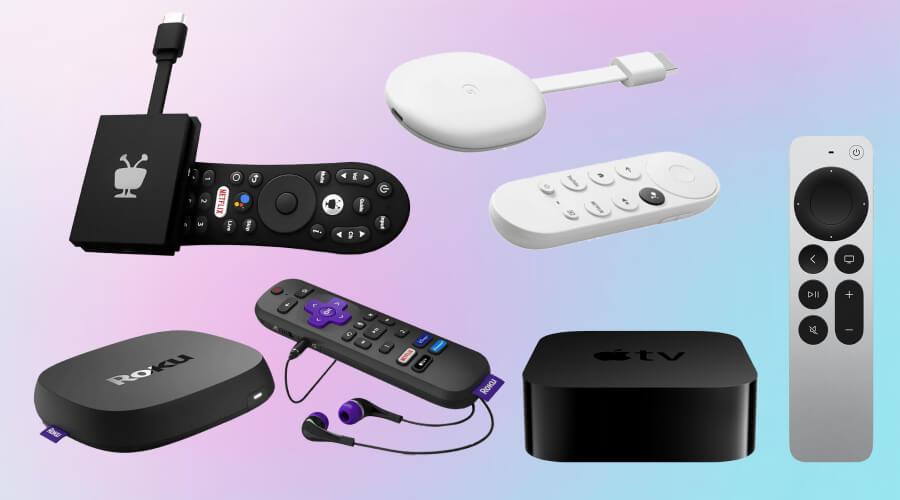In today’s digital age, streaming has become an integral part of how we consume media, with a plethora of devices available to enhance our viewing experience. From budget-friendly options to high-end models boasting advanced features, the market is flooded with choices that cater to varying preferences and needs. However, this abundance of options raises an important question for everyday users: Are high-end streaming devices truly necessary? This article aims to explore the capabilities and benefits of high-end streaming devices, compare them with their more affordable counterparts, and help you determine whether investing in such technology aligns with your personal viewing habits and requirements. By examining the features, performance, and potential advantages of high-end devices, we will provide you with a comprehensive understanding to make an informed decision about your streaming setup.
Understanding the Basics of Streaming Devices
Streaming devices have revolutionized how we consume media, offering a plethora of options for accessing content online. These devices, ranging from budget-friendly to high-end models, act as a bridge between your television and the internet. Understanding their core components and functionalities can help you decide whether investing in a premium model is necessary for your viewing habits.
- Hardware Capabilities: High-end streaming devices often boast faster processors and more RAM, which can lead to smoother performance, especially when streaming 4K content or using apps that require more resources.
- Software and Ecosystem: While budget devices offer basic streaming services, premium models might provide access to exclusive content, advanced features like voice control, and seamless integration with other smart home devices.
- Connectivity Options: More expensive models may include better Wi-Fi capabilities, Ethernet ports, and support for the latest HDMI standards, ensuring a more stable and high-quality connection.
For everyday users, the choice often depends on the balance between cost and convenience. If your primary need is to watch standard-definition content on a single TV, a basic device may suffice. However, if you require faster loading times, enhanced picture quality, or additional features, considering a higher-end option might be worthwhile.

Comparing Features: High-End vs. Budget-Friendly Options
When evaluating streaming devices, it’s essential to weigh the features of high-end models against their budget-friendly counterparts. High-end devices often boast advanced processing power, which translates to smoother navigation and quicker load times. They also frequently support higher resolution outputs, like 4K and HDR, providing a more vibrant and detailed viewing experience. Additionally, these devices might include premium audio formats, such as Dolby Atmos, for immersive sound quality.
- Voice Control & AI Integration: High-end devices often come equipped with voice assistants and AI capabilities, offering a hands-free, intuitive interface.
- Extensive App Support: Premium models typically support a broader range of apps and services, ensuring access to the latest streaming platforms.
- Enhanced Connectivity Options: Features like Ethernet ports and Bluetooth connectivity are more commonly found in high-end options.
On the other hand, budget-friendly devices are designed to deliver essential streaming functionalities without the extra bells and whistles. They usually offer 1080p streaming, which is adequate for most users, and support popular apps and services like Netflix, Hulu, and Amazon Prime Video. While they may lack the advanced features of their high-end siblings, these devices provide a cost-effective solution for users who prioritize simplicity and affordability.

Evaluating Your Streaming Needs and Preferences
When contemplating whether a high-end streaming device is necessary, it’s crucial to first consider your specific viewing habits and preferences. Start by asking yourself a few questions: Do you stream a lot of 4K or HDR content? How important is audio quality to you? Are you looking for a device with a fast and responsive interface? By identifying your needs, you can better assess whether a premium device will enhance your viewing experience.
- Content Variety: If your streaming habits involve hopping between multiple platforms, ensure the device supports all your preferred services.
- Picture and Sound Quality: High-end devices often offer superior video and audio processing, which may be necessary for cinephiles or audiophiles.
- Ease of Use: Consider the user interface and how intuitive it is to navigate. This can vary significantly between devices.
- Additional Features: Look for features such as voice control, gaming capabilities, or smart home integration that may align with your lifestyle.
Ultimately, will help determine if a high-end device is a worthwhile investment or if a more budget-friendly option will suffice.
Expert Recommendations for Everyday Streaming Users
When it comes to choosing a streaming device for everyday use, experts suggest focusing on a few key factors rather than just opting for the most expensive model available. Here are some practical recommendations to consider:
- Compatibility: Ensure that the device supports the streaming services you use most frequently, such as Netflix, Hulu, or Disney+.
- Resolution Needs: If your television supports 4K, look for devices that can stream in 4K to maximize your viewing experience. However, for Full HD TVs, a standard HD streaming device will suffice.
- User Interface: Consider the ease of use and navigation. Devices with intuitive interfaces can enhance your streaming experience by making it easier to find and manage content.
- Connectivity: Reliable Wi-Fi connectivity and multiple ports (such as HDMI and USB) are essential for smooth streaming and connecting additional peripherals.
Ultimately, the best choice will depend on your personal viewing habits and technological setup. While high-end devices come with advanced features, everyday users often find that mid-range options provide all the functionality they need at a more affordable price point.







































